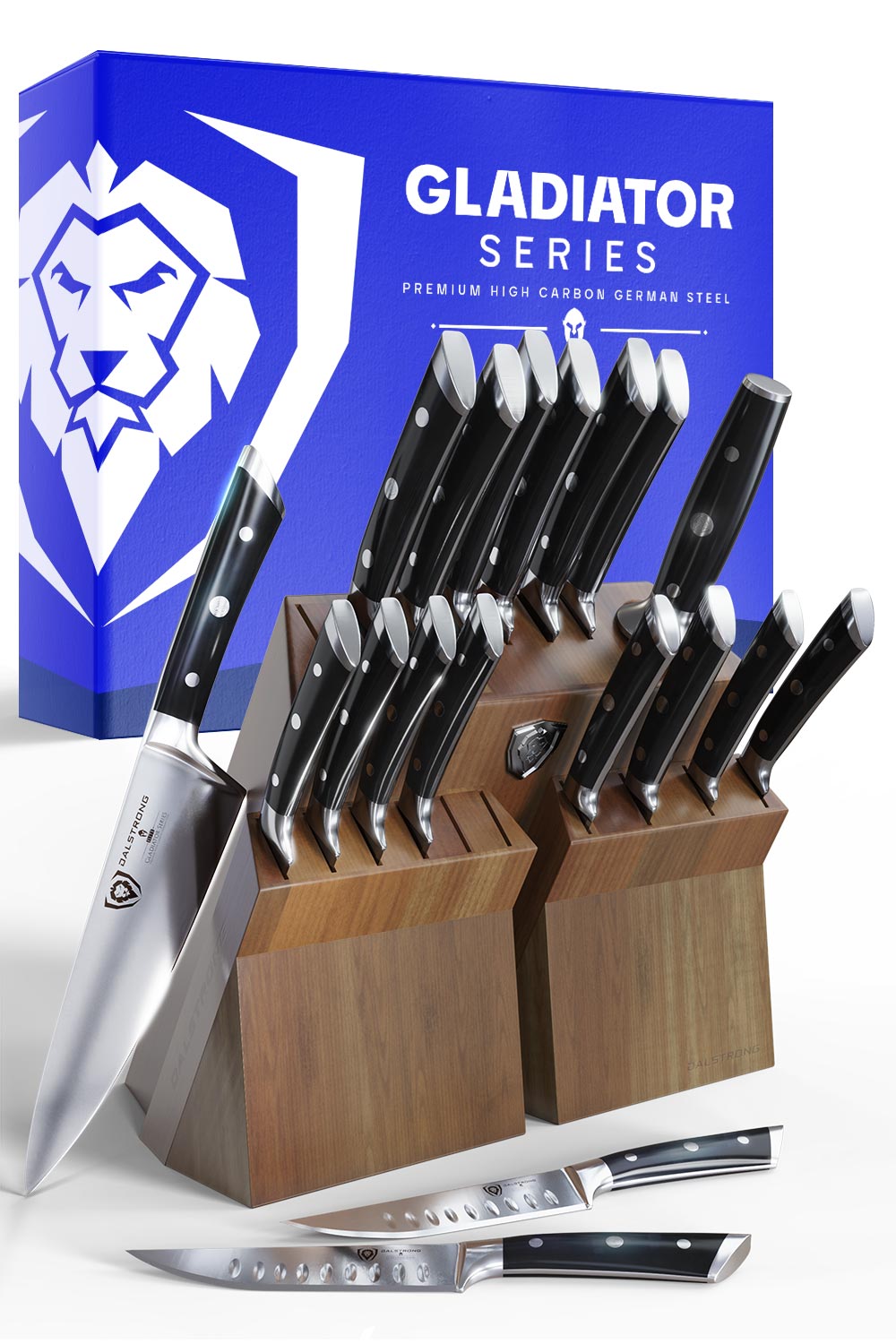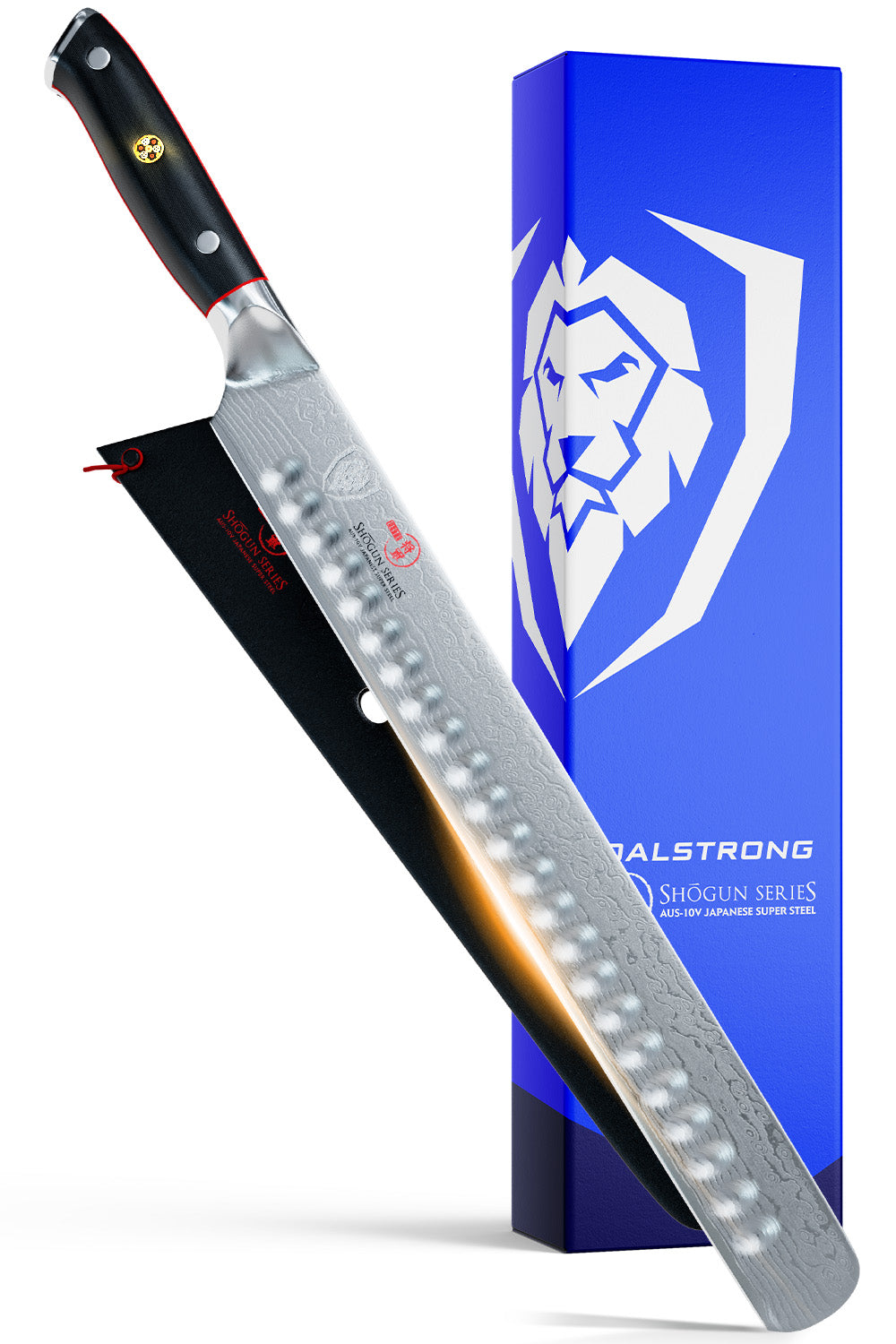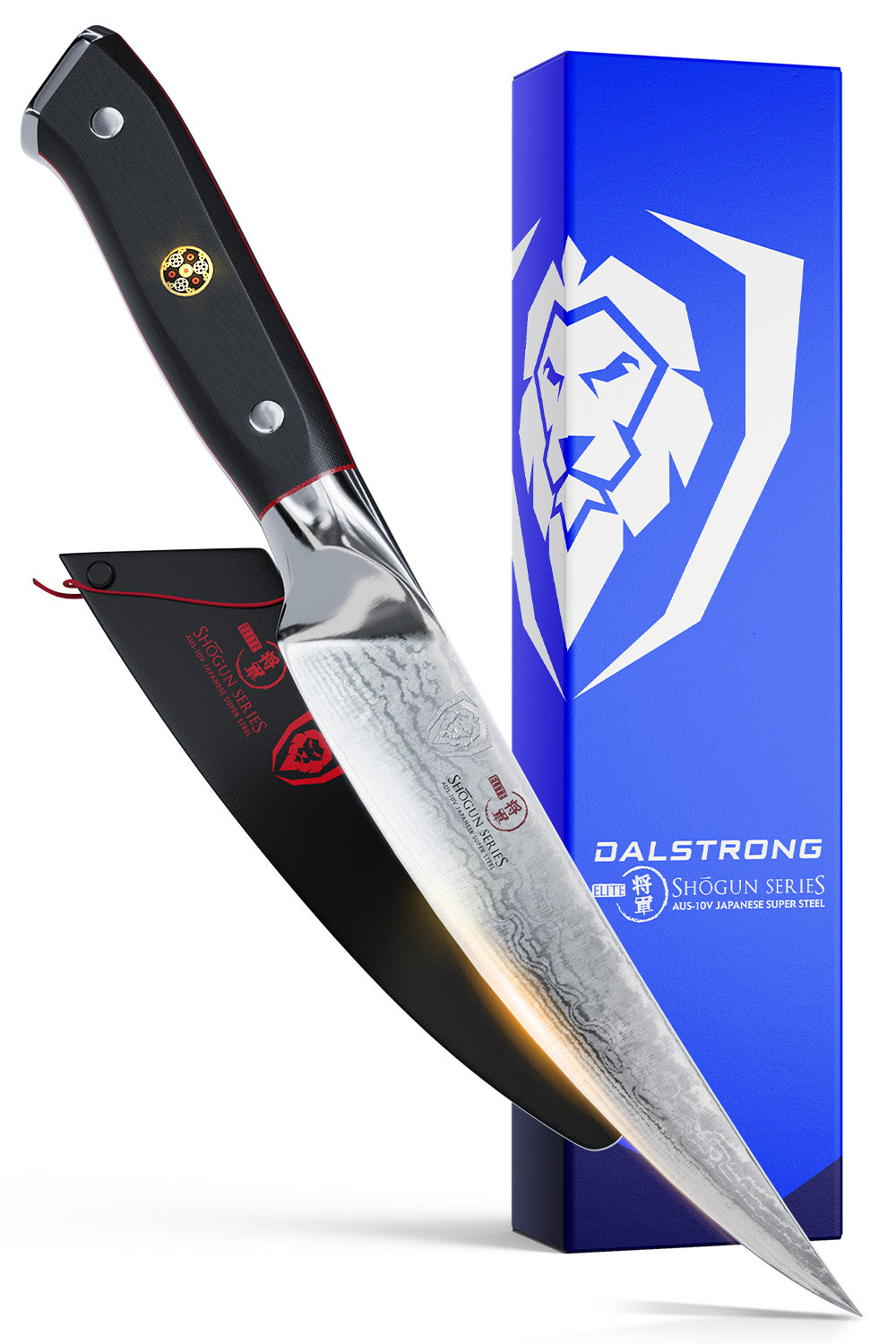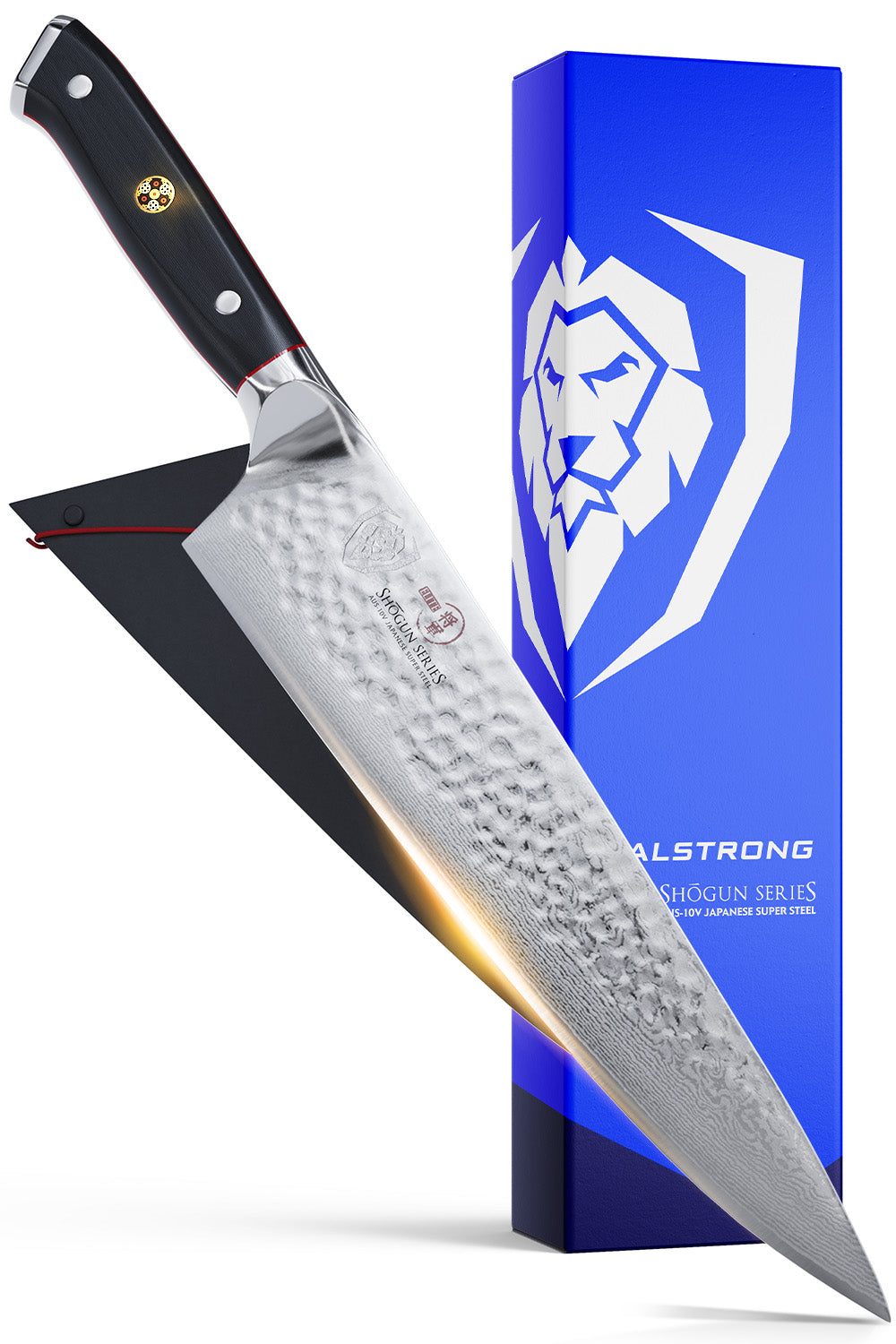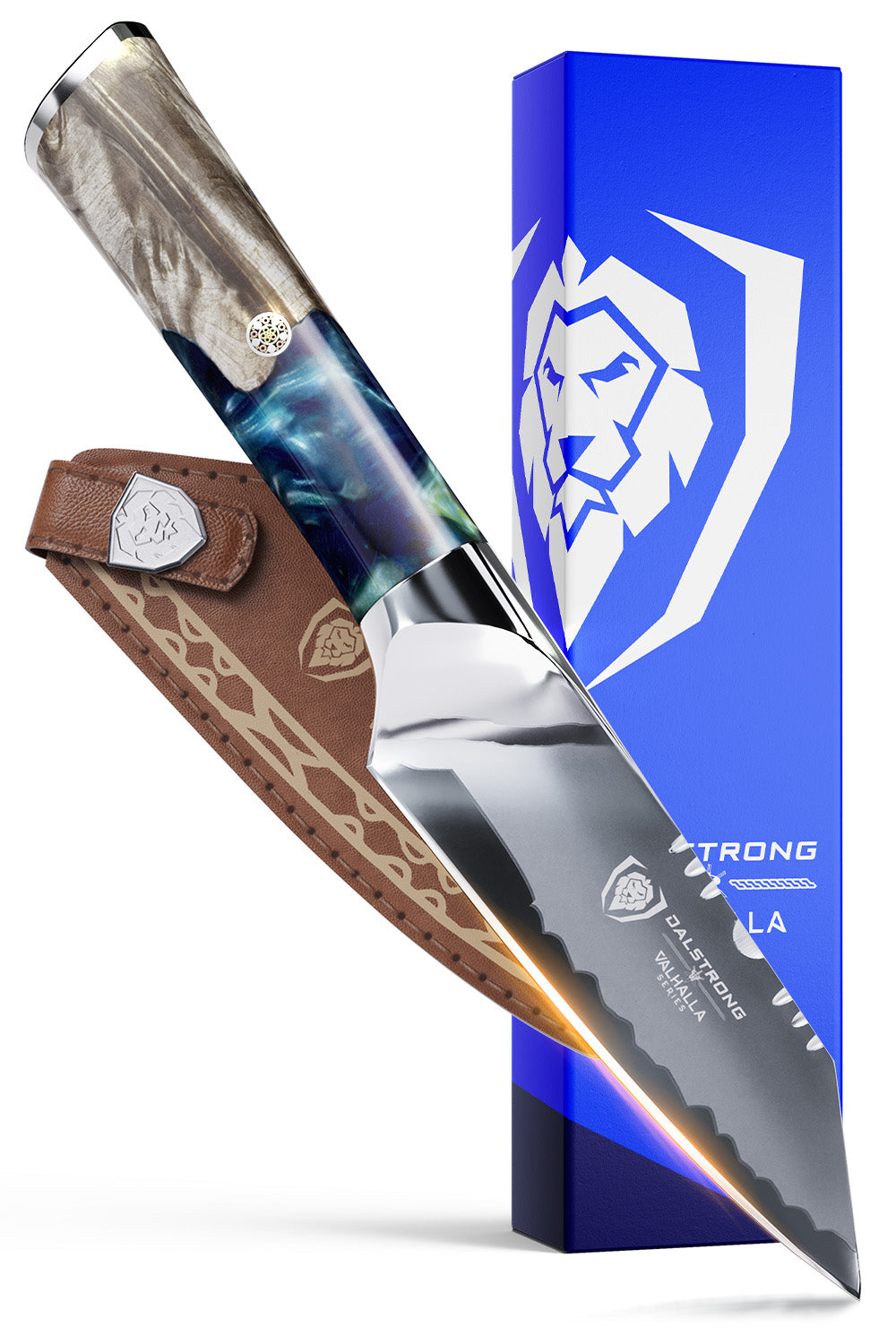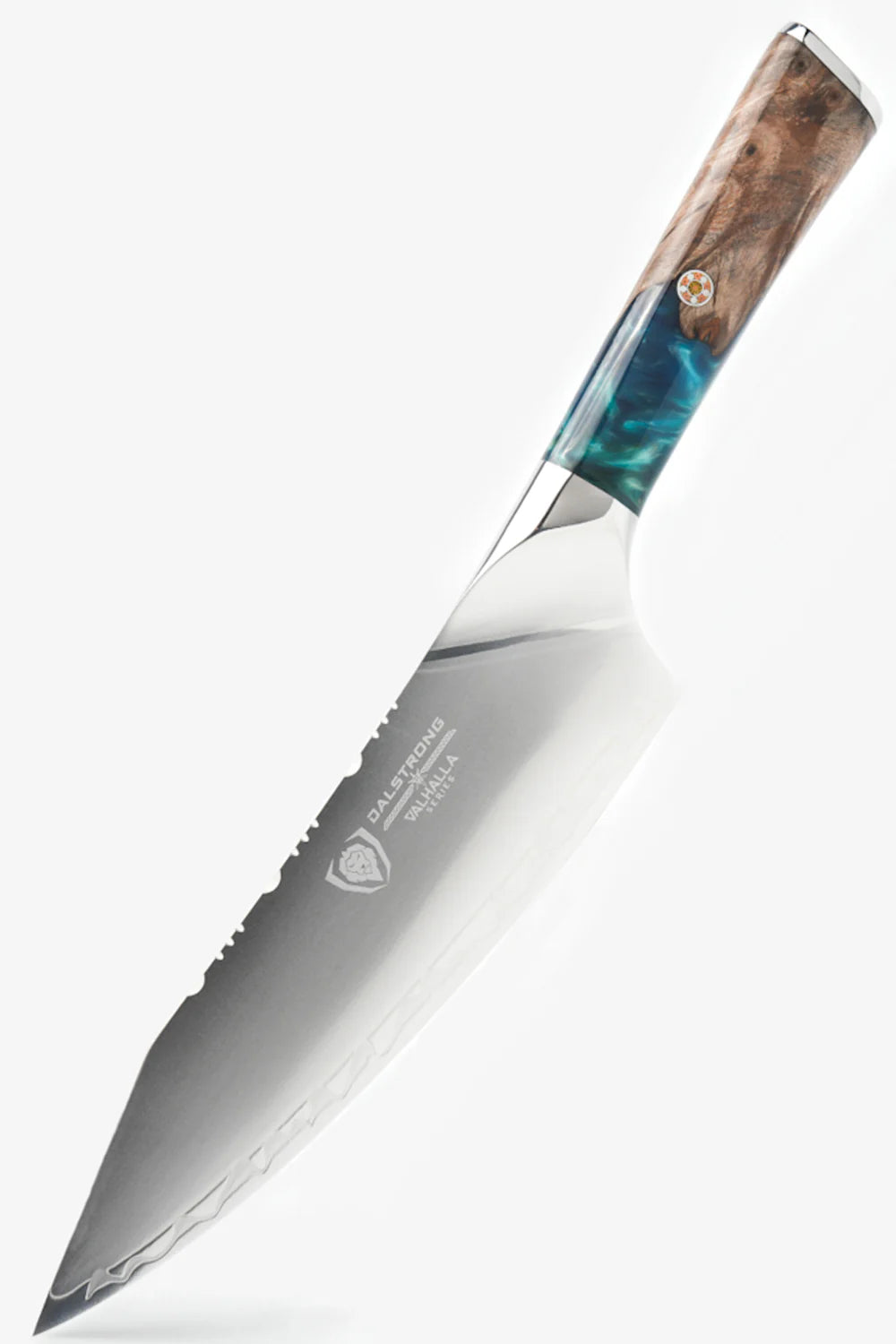 Oberon Series 6PC Cookware Set
Oberon Series 6PC Cookware Set
Summary: Ceramic vs Stainless Steel Cookware
Ceramic Cookware
Healthy alternatives go beyond your choices for food. Choosing the right quality of cookware is just as essential if you want your meals to preserve their nutritional value. Pure ceramic cookware is made with minerals from the Earth, and clay that is 100% natural in its form.
Stainless Steel Cookware
Made with iron, carbon, chromium, and nickel, stainless steel is a stunning workhorse in its own right that is loved by every single household for its durability, low maintenance and non-reactive nature. If you're all about searing, browning, and sauteing food, a stainless steel pan is your best friend.
 Avalon Series 10" Hammered Finish Silver Frying Pan
Avalon Series 10" Hammered Finish Silver Frying Pan
1. What Is Ceramic Cookware?
Ceramic cookware is a metal utensil but finished with a ceramic coating on the outside. There are plenty of reasons why the ceramic coating is an excellent touch to your cookware. The coating is what makes your ceramic cookware set stand out from the rest of the utensils in your kitchen that are made with stainless steel, nonstick cookware, or aluminum.
If you've ever been drawn towards utensils with a nonstick coating such as a nonstick pan, or a ceramic nonstick cookware set, this is your sign to go for it. Not only does it preserve the nutritional value of your food, but also distributes heat evenly across the cooking surface of your ceramic pan, decreasing the cooking time immensely.
2. Ceramic Cookware And Harmful Chemicals To Avoid
Your ceramic cookware is an all-rounder if it is free of PTFE (Per-and-poly-fluoroalkyl substances) and PFOA (Perfluorooctancesulfonic acid). Those are some interesting terms, aren’t they? Well, they’re better known as Teflon.
Teflon cookware is considered unsafe in the kitchen, and you should avoid them. Reading up before buying nonstick cookware is a great idea. Once your Teflon pans heat up to 500ºF, they start releasing toxic chemicals into your food and begin to chip away.
This is precisely why most people today avoid buying Teflon cookware and have shifted to ceramic cookware instead. The coating on your ceramic pan has minerals infused in it, making the surface lubricious, and a great addition to nonstick cookware.
3. What Is Stainless Steel Cookware?
Stainless steel cookware is made with iron, carbon, chromium, and sometimes nickel, to provide you with durability and an efficient cooking surface that preserves the taste of your food, while also decreasing your cooking time by heating up almost three times faster than other metal utensils.
The key component of stainless steel cookware is that it does not leach chemicals into the pan's surface when cooking acidic foods. It also has a strong reputation amongst those that prefer dishwasher safe cookware.
4. Stainless Steel Vs Ceramic Cookware Pros and Cons
Ceramic Steel Cookware
Pros
It is non-reactive, so the taste and texture of your food are unaltered. This versatile piece of cookware is a fan-favourite since it is oven, broiler, stop top, and dishwasher safe. This stain and chip-resistant bad boy is going to take up room in your kitchen for this particular reason.
Since the cooking surface is polished with a ceramic coating that contains minerals derived from Earth itself, you wouldn't need to grease your pan with oil or butter. This makes them beginner-friendly and results in a significant decrease in calorie intake, which is awesome if you're all about living a lifestyle with a calorie deficit.
Ceramic cookware is non-reactive and safe under high temperatures. While Teflon cookware begins to break down at 500º F, ceramic cookware is a leap stronger, as it would break down at a temperature of 800º F. Thanks to its greasy cooking surface, food cooked in ceramic cookware saves you from cold spots and requires less heat to cook food to perfection.
The best part? The variety is endless when it comes to colours, patterns, and size. It is pretty affordable, too.
Cons
While ceramic cookware is dishwasher safe, the slightest damage to your ceramic pans and pots would make them unsafe in dishwashers, ovens, or broilers. If dented, your ceramic pan would begin to chip away and harm the non stick ceramic coating on the cooking surface.
Non stick ceramic cookware can provide you with a shorter life span compared to a stainless steel pan set. The slick cooking surface of your pans set would wear out after 3-5 years as it would lose its natural grease.
While it can safely endure high temperatures while cooking on a stovetop, induction top, or in the oven, it would decrease its longevity. So, if you're on the lookout for a frying pan or a nonstick skillet that is built to last a lifetime, a ceramic frying pan might not be the best choice.
Stainless Steel
Pros
Aside from being one of the most durable metals out there, stainless steel is known for its corrosion-resistant nature. One major advantage of stainless steel is that it does not react with food at high heat, unlike utensils that are made with copper.
Stainless steel will never interfere with acidic foods by leaching chemical substances into them. Regardless of what you cook in your stainless steel cookware pans, your food's texture and nutritional value will remain untouched.
Apart from its corrosion-resistant nature, stainless steel cookware is favoured for being an oven-safe metal. Foods can be safely broiled and braised until a temperature of 1200º F instead of 600º F, so it is far more durable and can withstand high heat without any damage to the cooking surface.
Cons
Stainless steel has a couple of drawbacks because of its non stick qualities. Food tends to stick to the cooking surface as stainless steel frying pans don't have non stick coating on them, which also makes it difficult to clean them later.
Stainless steel pans have to be seasoned and heated adequately to avoid burning of food and damage to your pan. If you want to avoid such hassles, a cast iron skillet would be a great addition to your kitchen arsenal. A cast iron would season and sear your food just as well as a stainless steel frying pan, and be much easier to clean later on. They also decrease cooking time tremendously.
Unless you have a fully-clad stainless steel pan, you may experience poor heat conduction and hot spots when cooking. So, if you want to avoid burning and sticking of food, go for tri-clad stainless steel cookware or a fully-clad one.
5. Ceramic Vs Stainless Steel Cookware – A Brief Discussion on Sustainability
Just like healthy alternatives, sustainability goes beyond the recycling of food and waste. The utensils in your kitchen play a big role in creating a more sustainable environment. Let's talk about this.
Ceramic Cookware
The best ceramic cookware is a completely recyclable one. The ceramic coating used as a finish on cookware is packed with minerals that are derived directly from Earth itself, ceramic cookware is an excellent choice when it comes to sustainability that begins from your kitchen. Avoiding Teflon cookware such as Teflon pans and pots is a great first step towards sustainability.
Ceramic cookware such as a dutch oven is one of the best options to go with as they use 60% less carbon dioxide than other traditional non stick pans. The non-toxic cooking surface of a dutch oven prevents the burning and sticking of foods, and rusting too. Dutch ovens are growing in demand because they now come with a manual on how to recycle them when it's time for you to discard the utensil.
Stainless Steel Cookware
Stainless steel is an excellent choice for a sustainable experience as it can be recycled infinite times and not cause a reduction in its quality. This is precisely why we at Dalstrong have a rich variety of stainless steel products.
As discussed earlier, Teflon can be harmful to people when they're cooking food at high heat, but it can be just as harmful to manufacturers when in production, too. Stainless steel on the other hand does cause any harm at all. Another fantastic aspect of stainless steel cookware, especially the cooking pan, is its long lifespan, which reduces carbon emissions significantly when manufactured.
6. How To Clean Ceramic and Stainless Steel Cookware
Ceramic Cookware
You might remember your parents buying non stick ceramic cookware from Equal Parts, but what you might not know is the maintenance and care ceramic pots and pans require. So, we're here to uncomplicate the process and walk you through it!
Non stick ceramic cookware saves you the trouble of scrubbing burnt or stuck food, but they still require good care. Before we dive into it, please note that you must never use steel wool or metal pads on nonstick cooking surfaces.
- Allow your ceramic coated cookware to cool down before you drizzle dish soap over it. To preserve your very own 'best ceramic cookware set', avoid drastic changes to it. You want to clean it after the sizzling goes away and the pan completely cools down.
- Instead of filling your ceramic cookware set with dish soap and water, you want to immerse your ceramic cookware set in a sink filled with soap water instead.
- Use a sponge and gently wipe in a back and forth motion.
- Rinse and dry your ceramic cookware set. Note that your ceramic pan should be completely dry, as soap water can damage the cooking surface and the nonstick coating, decreasing the lifespan of your cookware set, preventing you from establishing your very own 'best cookware set'. Who wants that, right?
There you have it! Your ceramic coated pan is back to its original form.
Stainless Steel Cookware
Taking good care of your stainless steel is not complicated.
Out of all other cooking pans, stainless steel pans take on extreme temperatures as they cook food at high heat. What's certain is that you’re working with meats and hot oils throughout your day.
This is the opposite of what you would follow for ceramic cookware where doing this would decrease its durability significantly. Here are a few tips to maintain these bad boys.
Baking Soda
You might be underestimating baking soda! Simply put, baking soda can do wonders. It can very easily clean grease and stains off any nonstick cookware, as well as stainless steel cookware. All you need to do is make a thick paste of baking soda with hydrogen peroxide with a few drops of dish liquid.
Using steel wool is ideal to scrub your nonstick cookware as it requires less effort. Then, apply the paste to the stuck-on food particles. Use warm water to rinse off the paste after 30 minutes, and bob’s your uncle! You can do this to pans with a stainless steel cooking surface, too.
Ketchup
This infamous condiment can do wonders when paired with finger foods, or your greasy nonstick pans, too! All you need to do is take 2 tablespoons of ketchup and allow it to sit on your nonstick pan overnight. The next morning, rinse it off with some lukewarm water using a ball of steel wool.
Salt and Vinegar
This is an idea you can use for ceramic cookware, too. Nonstick skillets and dutch ovens are on the expensive end of cookware sets, so you obviously want to make sure you’re maintaining them well.
Accidents happen, but all you need to do is soak your nonstick skillet or non stick cookware with white vinegar for about 45 minutes to an hour, and sprinkle a tablespoon of salt over it, simultaneously. Add some dish liquid and scrub vigorously with a stainless steel scrubber or a sponge.
And there you have it, folks! A squeaky clean frying pan ready to whip up more delicacies.
7. How To Season Ceramic and Stainless Steel Cookware
Ceramic Cookware
Wash and pat dry your ceramic pan before getting started. These pans have a natural slick thanks to the ceramic coating and their nonstick nature which plays a big role.
- A little goes a long way. Non stick pans with ceramic coating don't need to be greased with oil or butter in large quantities. So, begin by layering your pan with a little oil or butter, to begin with. Using a brush to evenly spread out is an excellent idea.
- (Remember that it is best to avoid oils with a low smoking point, especially when it comes to ceramic pans. These include olive oil, coconut oil, and cooking sprays, too.)
- Heat up your nonstick ceramic pan. Medium heat is best as it prevents your oil from burning. Burnt oil impacts the quality of your food tremendously in terms of taste, texture, and nutritional value.
- Remove your nonstick ceramic pan from the stovetop and use a paper towel to pat dry the oil you heated up. Then, let your pan cool on the countertop. If you aren't immediately cooking food, it's best to put your nonstick pan in the oven so it could retain a room-like temperature. If your oil cools down over say, the next hour, heating it again could burn it amid the cooking process.
Stainless Steel Cookware
Yes, cast iron skillets and nonstick pans are great! But, if you're like me, a die-hard lover of all things stainless steel, let's get seasoning.
- Wash and dry your stainless steel pan. Remember to dry it with a tablecloth or a paper towel, as the tiniest drops of water could burn your oil.
- Oil your pan. Once your pan is patted dry, turn on the stove and keep the heat at a medium temperature to avoid your oil from smoking up. Add a drop of oil, to begin with. Similar to seasoning a ceramic pan, you want to use oils with a high smoking point such as sesame, avocado, or peanut oil.
- Once your oil begins to smoke, you have successfully seasoned your pan. Turn the stove off and remove your pan and set it aside on the countertop.
- Use a paper towel to dab the oil off of the cooking surface once the pan has cooled down. Repeat the process when you notice that food is starting to stick to the bottom of your cooking surface once again. Re-seasoning does not ruin the quality of your oil or the food you cook in it!
8. Alternatives To Ceramic Cookware
If you're not big on finding the best ceramic cookware set, these alternatives will be useful to you.
1. Cast Iron
A skillet or dutch oven is the perfect hybrid for a fry pan or a nonstick pan. If you're particular about the volume and depth, a dutch oven is your best choice! A cast iron is a versatile piece of cookware if you want to cook beans, pilafs, or curries.
2. Enamelled Pan
Fry pans as an enamelled one comes in various colours and designs. Ceramic and iron cookware are much lighter than a traditional nonstick Le-Creuset, so this should give you an idea about its weight and depth.
3. Aluminum Cookware
Who doesn't love an affordable piece of cookware? While aluminum doesn't offer a nonstick coating, it is an excellent conductor of heat and has a great distribution of heat which helps cook food faster. It is perfect for beginners.
9. Dalstrong's Best Cookware Sets
Dalstrong's community thrives on achieving the best results because of the variety we offer on our end. Our cookware sets didn't come to play. Let's get into it!
1. 10" Frying Pan & Skillet ETERNA Non-Stick | Oberon Series

Perfect for big lunches and leftovers, this hybrid of a wok and fry pan has a 10" inch nonstick cooking surface with a 3-Ply aluminum core. This fry pan is the perfect purchase for a couple or a small family; holding just enough food for 3-4 people.
This stainless steel beauty has a glass lid with a vented hole for pressure release. Get this in addition to the infamous Dalstrong pots and pans set and you've bagged yourself versatility.
Pros:
- Built with a sturdy 2.5mm thickness to prevent warping or denting.
- It has an impeccable talent for heat retention and conductivity without damaging its nonstick nature.
Cons:
- Since it is used by professional chefs, it could be intimidating for the novice. But, all it takes is a leap of faith!
- If you live by yourself, you may not need a wok as big as this one.
2. 12 Piece Cookware Set Oberon Series

Versatile all around, the 3-Ply Copper aluminum cladding in this set poses a challenge to a traditional stainless steel cookware set. Functional and showstopping in its appearance, it comes with a full range of everything needed to nail the art of culinary.
Every fry pan needs a pot to go with it, and this series has pots in the perfect sizes to give your kitchen arsenal all the charm.
Pros:
- Heats up immediately and offers maximum conductivity.
- A vented hole on the glass lid prevents spillage and acts as a pressure release.
- Transition easily from the stovetop to the oven for the perfect finish on your food.
Cons:
- You may prefer individual pieces of cookware, so this cookware set might not be the correct purchase. Check out the individual pieces from this set here.
- This set could be daunting if you’re a novice in the kitchen. But read up on our chef blogs and you'll soon become a Dalstrong pro. We're so sure about this.
3. 12-Piece Cookware Set Silver | Avalon Series

Pots are just as great as pans, folks. So, make the most of it with this 12-piece cookware set from the Avalon series which is nothing but versatile.
The 5-Ply Copper Forged Foundation challenges the traditional stainless steel cookware set. This 12-piece cookware set with an incredible pair of pots and pans would allow you to cook and sear steaks, sauté, and deep-fry fritters. The pot included in this set is perfect to simmer and bring sauces and jams to the desired consistency.
Pros:
- Built to last generations, so it's completely worth the price.
- Your one-stop-shop for all that should belong in your kitchen arsenal.
Cons:
- Might be an expensive buy for beginners.
- If you live by yourself, this set could take up some space in your kitchen.
4. 12" Frying Pan & Skillet Hammered Finish Black | Avalon Series
Functional in its form, this 12” frying pan and skillet from the Avalon series has great responsiveness to temperature changes and is built to preserve the nutritional qualities of the food, including its taste, texture, and colour. With a glass lid designed to last a lifetime, it locks in moisture and heat to cook your food to perfection.
Pros:
- A 5-Ply Copper Forged Foundation to protect the cookware set from staining and warping.
- A side stainless steel handle for a sturdy and firm grip.
Cons:
- While striking in its appearance, this frying pan could be on the higher end of the price range for some folks.
- Some might prefer the traditional route and opt for a classic silver finish stainless steel look like this one.
10. Frequently Asked Questions
Is ceramic cookware healthy?
Ceramic cookware is an incredibly healthy alternative compared to other utensils, thanks to its mineral-rich nonstick coating and clay that is sourced from Earth itself.
What are the disadvantages of ceramic cookware?
Ceramic cookware takes a little longer to heat up and may have cold or hot spots in odd places on your cooking surface if it's over 3-5 years old. This could affect your food significantly.
Is ceramic coating cookware safe?
Absolutely. Ceramic coating is derived from minerals that are sourced from the Earth's surface, so not only is it safe and healthy, but it's sustainable too.
Is ceramic better than non-stick?
This is completely up to your preference! But, both offer great results such as durability and shorter cooking time.






























































